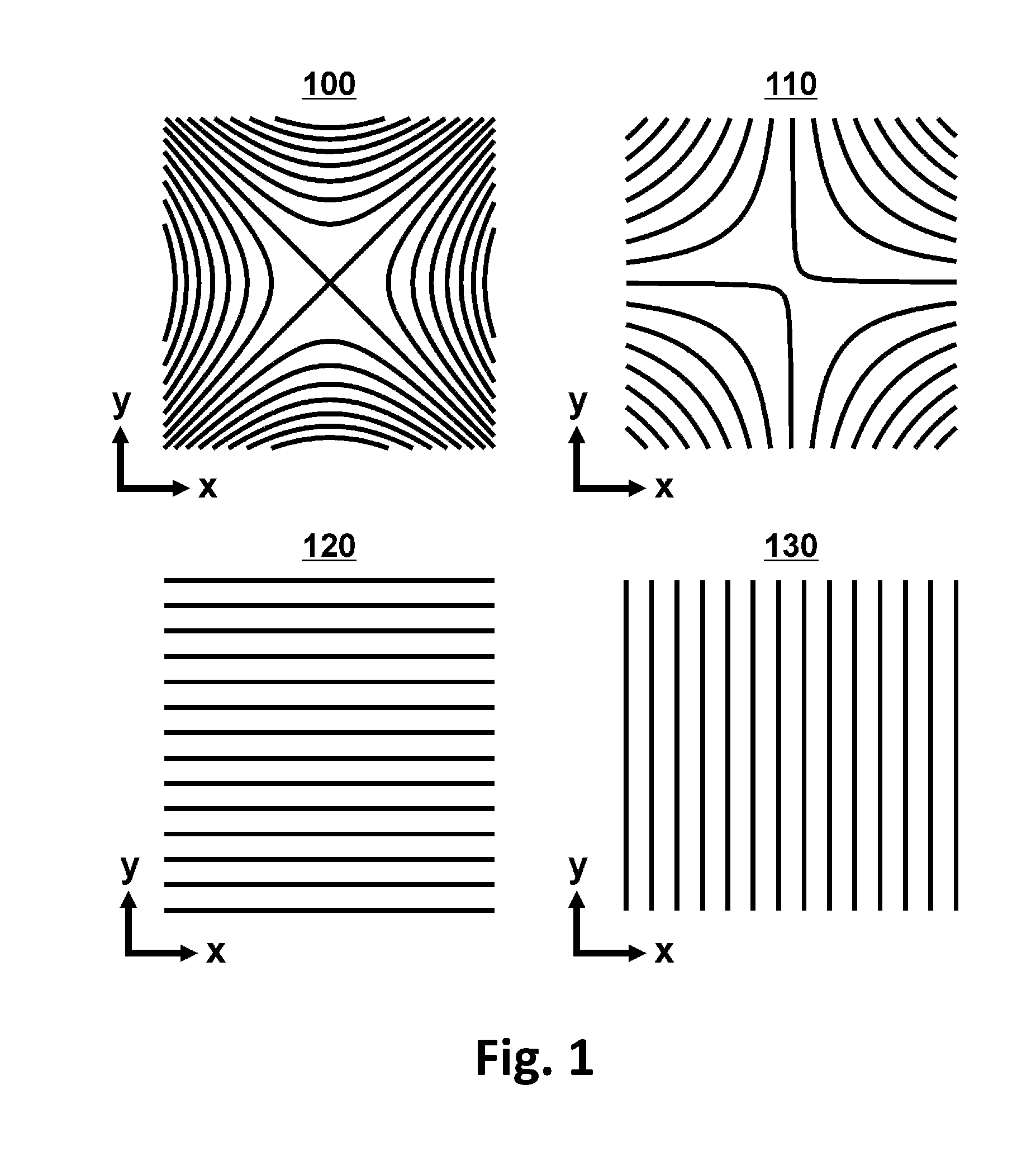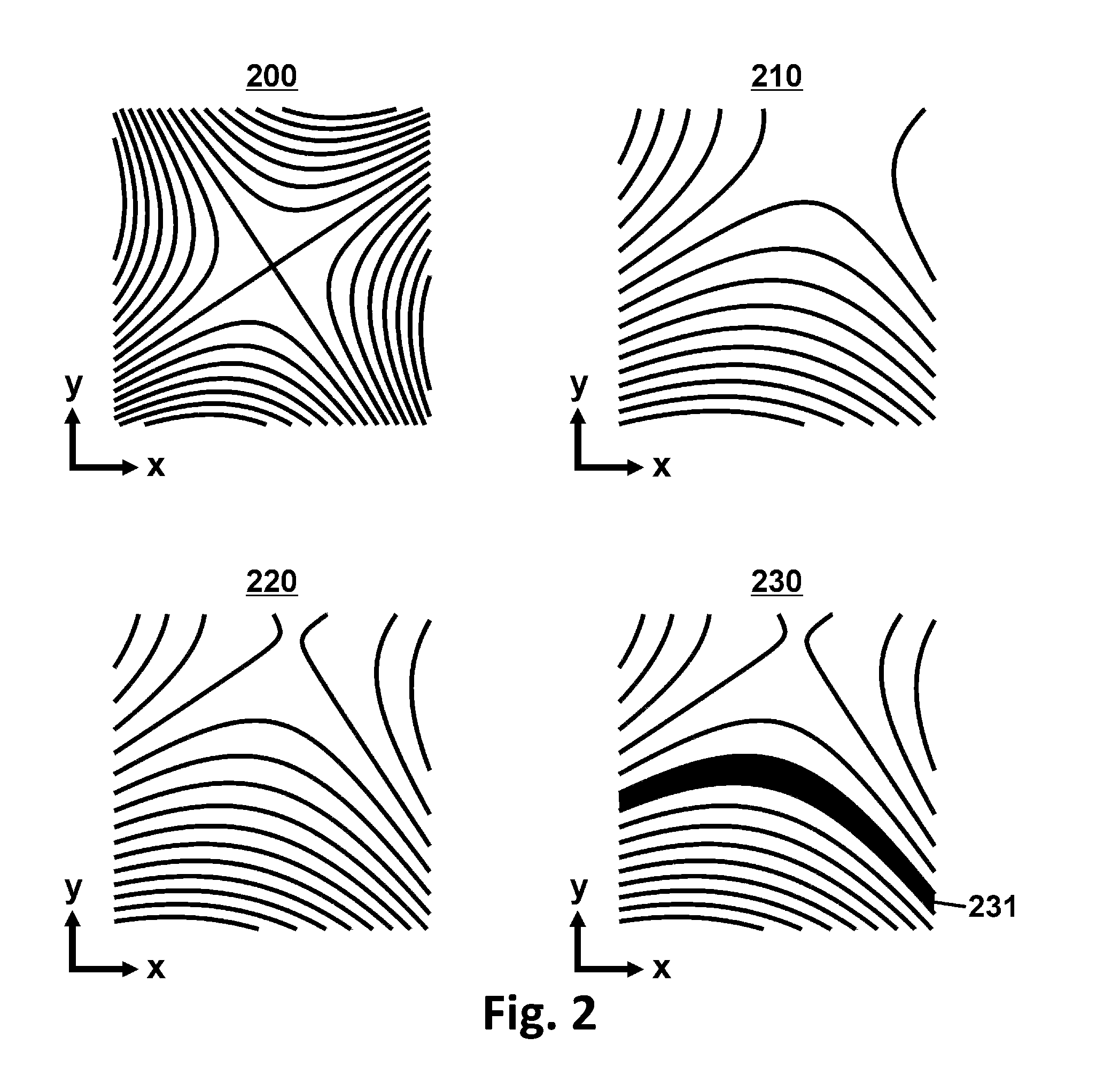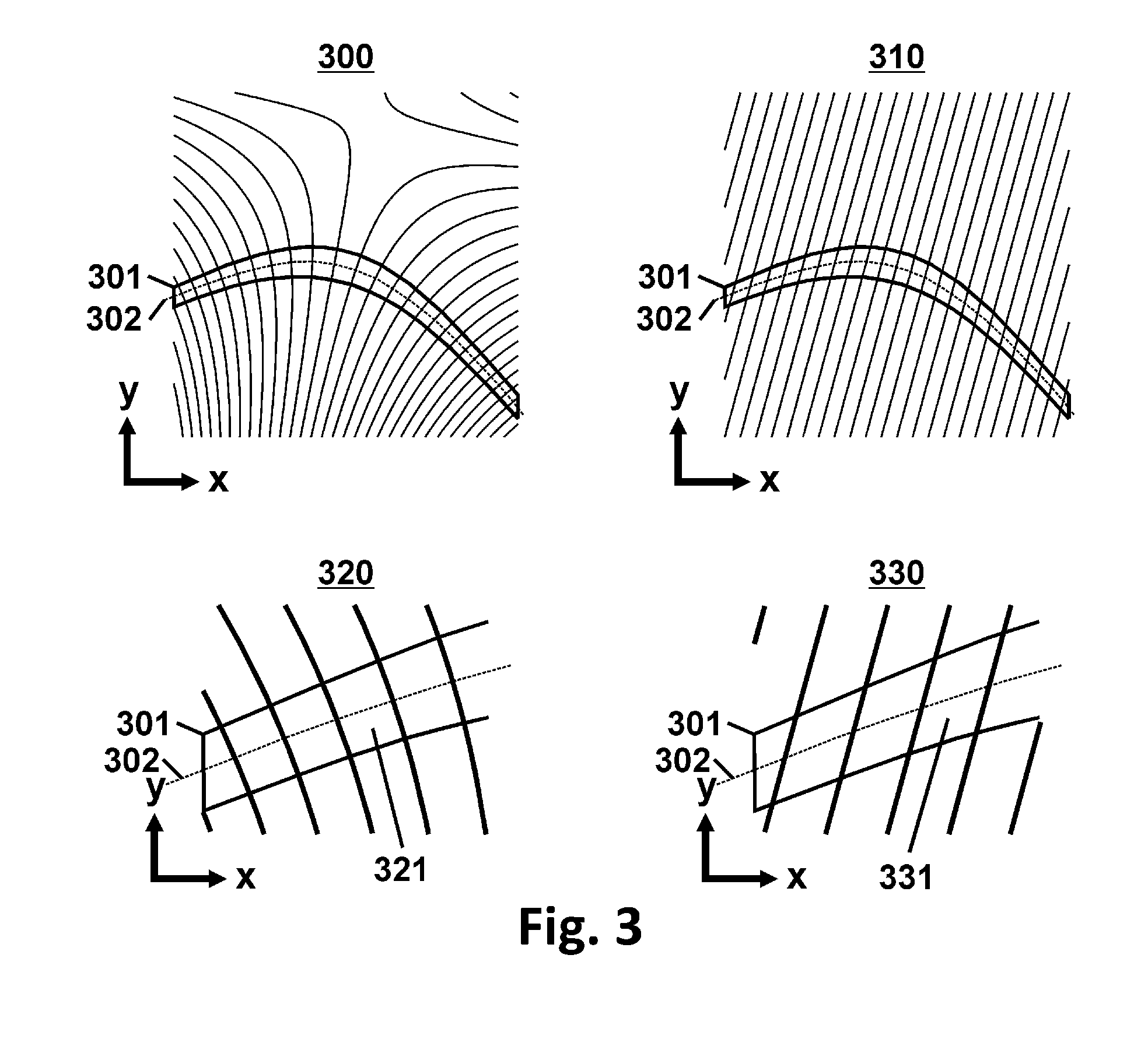Method of magnetic resonance imaging for the selection and recording of curved slices
a magnetic resonance imaging and curved slice technology, applied in the field of mr (= magnetic resonance imaging), can solve the problems of reducing the energy deposition in the object to be examined, low transmission power, etc., and achieves the effect of reducing acquisition time, speeding up the acquisition process, and maximizing the generation of differences
- Summary
- Abstract
- Description
- Claims
- Application Information
AI Technical Summary
Benefits of technology
Problems solved by technology
Method used
Image
Examples
Embodiment Construction
[0054]This invention relates to a further development of methods of magnetic resonance imaging that make selection and encoding of curved slices possible. It is based on the use of combinations of field components with spatially linear and spatially non-linear dependencies both for selection and also for spatial encoding of non-planar slices.
[0055]By applying a superimposed magnetic field during the irradiation of a one-dimensional RF pulse, it is possible to select a volume whose shape depends on the spatial dependence of the superimposed magnetic field and the frequency characteristics of the RF pulse. In a standard case of this process, named slice selection, with a spatially linear dependence of the superimposed magnetic field, the shape of the excited volume corresponds to a planar slice. If the superimposed magnetic field is composed of orthogonal field components, the orientation of the slice can be changed in any way by selecting a suitable amplitude. Spatial encoding with f...
PUM
 Login to View More
Login to View More Abstract
Description
Claims
Application Information
 Login to View More
Login to View More - R&D
- Intellectual Property
- Life Sciences
- Materials
- Tech Scout
- Unparalleled Data Quality
- Higher Quality Content
- 60% Fewer Hallucinations
Browse by: Latest US Patents, China's latest patents, Technical Efficacy Thesaurus, Application Domain, Technology Topic, Popular Technical Reports.
© 2025 PatSnap. All rights reserved.Legal|Privacy policy|Modern Slavery Act Transparency Statement|Sitemap|About US| Contact US: help@patsnap.com



